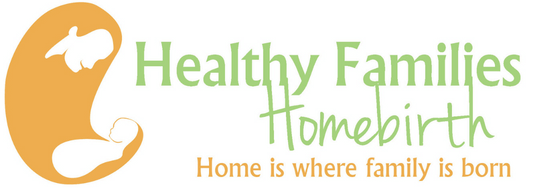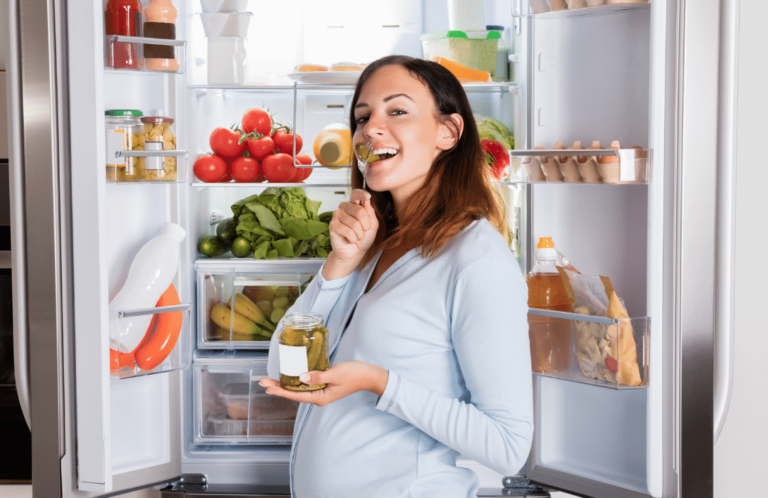

PHONE
303-718-1554
cheryl.furer@msn.com
OPENING HOURS
By Appointment Only
Menu

“Growing a baby is a big job that requires you to have good materials, enough to meet your
needs and your baby’s.” ~Aviva Jill Romm
A healthy pregnancy, postpartum, and family starts with putting the best foods into your body. Making the commitment to eat good quality food ensures that your baby will be getting the best possible start to life. A healthy pregnancy diet can help prevent common pregnancy issues, such as persistent constipation, headaches, leg cramps, and exhaustion, as well as more complicated problems, like high blood pressure, toxemia, and preeclampsia. During pregnancy is not the time to start or continue a weight loss plan. If you have had issues surrounding your weight in the
past, please talk to your health care provider and/or a professional counselor about it. When you are eating healthy foods, the weight you gain during pregnancy is for a positive reason. Listed below are some key food groups to eat from, common foods to avoid or eat in moderation, and key points about different diets.
PREGNANCY HIGHLIGHTS
First Trimester
Second Trimester
Third Trimester
Remember that a baby born at this time would need to eat every 2-3 hours. That is how often you should be feeding yourself too!
Keeping it Simple:
About 80-100 grams of protein per day is recommended. The additional protein helps with blood volume expansion, fetal growth and development, uterine muscle growth, and lowers the risk of toxemia. The key is increasing both protein and calories. If protein is burned for energy, then less amino acids will be available to your developing baby.
Carbohydrates are the main source that your body uses to burn energy. If you aren’t including plenty of whole grain carbs into your diet, your body may burn protein and fats for energy instead. This will leave fewer reserves for your developing baby and could create ketones in your urine- which is one sign of gestational diabetes. Be sure to get your carbs from whole grain sources. Avoid refined white flours and foods.
Not only are fruits and vegetables a source for liquids, they are packed full of vitamins, minerals, and fiber. The more colorful a fruit or vegetable is, the more nutritious it is. Fresh fruits and vegetables are preferred, with locally grown and/or organically grown being the highest quality. Next nutritious are frozen fruits and vegetables. Generally fruits and vegetables are frozen at the time of harvest and that will help maintain the nutrients in the food. Lastly, canned or packaged fruits and vegetables should be considered. These should only be eaten as your vegetable or fruit serving, as a last resort. Generally canning involves a lot of sugar or salt, and cooking it at very high temperatures destroys nutrients.
Yes, you do need to eat fats! Good fats- I’ll get to this in a moment- surround the nerves and are the main component in the brain. Fat on your body can store hormones, provides temperature regulation, and protects your organs. Of course, there is a good balance of fat that should be maintained on the body, but pregnancy isn’t the right time to be overly concerned about it. What you should be concerned about are the types of fats you are eating. Bad fats, such as trans-fats, which should be avoided altogether, and saturated fats, which should be limited, can cause an increase in cholesterol and cardiovascular issues. Good fats, like Omega-3, Omega-6, and Omega-9, can be enjoyed daily. See below for great sources of good fats.
Increased blood supply, amniotic fluid, and extra tissue support all rely on additional fluids. The USDA recommends about 12 cups or 3 liters of fluid a day for pregnant women. About 20% of that fluid is likely to come from the foods you eat, while the other 80% should come from clean water (mostly), juices, and decaffeinated teas. Healthy kidneys can filter out excessive amounts of water, but be aware that drinking more than 24 oz of fluid an hour can disturb the blood’s electrolyte balance.
Iron – Iron deficiency anemia increases the risk of a low-birth weight or premature infant. Traveling to higher altitudes will increase your body’s need for this mineral. Even if you eat red meat, it may be important to supplement some. Blood tests that are done throughout your prenatal care will determine if any additional actions should be taken.
Calcium – Calcium is especially important in the third trimester and during breastfeeding when your baby is building bones. The RDA for pregnant and breastfeeding women is 1,200 to 1,500 milligrams of calcium a day. Plus, calcium lowers your risk of high blood pressure.
Are not a food group, but worth mentioning. Even though many foods have B-vitamins, I believe that all adults should take an extra supplement. B-vitamins are a water soluble nutrient. This means that the body generally doesn’t store or hold onto B-vitamins very well. Also, several studies have shown that women generally lack enough B- vitamins prepregnancy. B-vitamins work as a family in the body and they compete for absorption. If you take only one B vitamin, you could become deficient in another. B-vitamins help your body use energy better, which means it may help with that pregnancy brain you just discovered you have!
Choose lean cuts of meat and leave the skin and fat off; Milk and milk products; Eggs; Soy products; Quinoa; TVP-textured vegetable protein; Legumes- beans, peanuts, whole grains- brown rice, oatmeal, whole wheat flour, millet, buckwheat; nuts- cashews, almonds, sesame seeds.
Go for whole grain varieties whenever possible- pasta, bread, bagels, tortilla, Corn bread, dinner roll or biscuit; starchy vegetables and fruit also provide carbs- corn, lima beans, beets, potato, figs, papaya, banana, pineapple, squash.
I love making a smoothie with berries, coconut milk, and blackstrap molasses in the morning. It’s a nutrient rich breakfast! Melons; Tomatoes and tomato products; Berries; Citrus fruits; Broccoli; various greens- the darker the better. A great source when shopping for produce is to ask the people working in the department how they would cook or eat a certain fruit or vegetable. Bring home something new each grocery trip and eat it that
night.
Omega 3 and 6 are good fats that we have to get from our diet. Our body doesn’t make them. Omega 9 is a fat that our body can make at will. Omega 9 is the most abundant fatty acid in nature and not in short supply in our diets. The best place to eat your Omega 9 fats are from olive oil because of other nutrients in the oil. The next easiest fat to consume is Omega 6. This fat is found in soy oil, sunflower seeds and oil, flax seeds, hemp seeds and powder, pumpkin seeds, peanuts, almonds, and many other seeds, nuts, and oils. As you can see, it is likely you are already consuming plenty of Omega 6 fatty acids. Omega-6’s partner is Omega-3. Our diets should have a 2:1 ratio of Omega-6 to Omega-3. So where are natural sources of Omega-3? Flax seeds and oil; hemp seeds, oil and powder; chia seeds; soybeans and tofu; and fatty fish- salmon, sardines, halibut, snapper, and scallops.
Dried fruits- apricots, raisins, figs, prunes, and cherries; dark leafy green vegetables- kale, swiss chard, collards; blackstrap molasses, sea vegetables, dried beans, legumes, whole grains, eggs, lean red meat, and eggs. Floradix iron supplement has been shown to raise serum iron levels quickly if needed.
Almond milk, leafy green vegetables, sea vegetables, salmon, and blackstrap molasses
Sea vegetables are the most abundant source- Kelp flakes can be added to almost anything without changing the flavor too much. Iodized salt is another way to make sure this mineral is in your diet.
I consider the following foods super foods because they pack lots of nutrients in a little package. If you want help finding them or tips on using them, let me know. The web has recipes that are easy.
A complete protein this little seed cooks like rice, yet has so much to offer. One cup= 15% of daily iron; 30% magnesium; 28% phosphorus; 19% Folic acid; 58% Manganese; plus it’s high in fiber!
You won’t believe your eyes with 1 cup of raw kale providing 206% of your daily Vitamin A; 134% Vitamin C; 684% Vitamin K; plus Omega-3 and 6 this leafy green will be your new best friend.
This thick syrup can be used to provide the key flavoring in baked beans or ginger bread. With 12% daily value of calcium, 14% copper, 13% iron, 18% manganese; and several B vitamins, you’ll be finding new ways to add it to your menu.
This handy on-the-go snack is a great way to fill up when you’re out or in bed. For 1 cup of roasted almonds you’ll get 108% DV of magnesium, 46% Calcium; 32% iron; 73% phosphorus; 31% potassium; Omega 6, plus 33 grams of protein!
High in Omega-3 and 6 you can’t pass on the flax. The ground seeds can be added to oatmeal, muffins, salads, or yogurt to give it a boost. The oil can be used as salad dressing or anywhere oil could be used. Don’t cook with the oil though. It’ll destroy the valuable Omegas. Flax is also high in folic acid and B6.
Hemp is one of the best kept secrets. It is high in fiber, Omega 3 and 6, and is a green food. Hemp seeds also contain 48% DV of Magnesium, 16% Iron, and 23% Zinc. Mostly available in protein powders it is a great way to start the day or boost your afternoon.
Overall, it is best not to waste your money, time, or digestion eating these types of foods.
This is a manufactured fat that the food industry created to keep pastries and bread on the shelf longer. Unfortunately, our bodies don’t process trans-fats the way that regular fats get processed and they can cause a higher incidence of heart disease, stroke, diabetes, obesity, and liver dysfunction. Trans-fats are also found in most fried foods and fast foods.
Nitrates are the biggest concern from highly-processed, packaged deli meats. When meats, like salami and bologna, haven’t had time to “cure”, they contain the nitrite, NO², which is a carcinogen. It is best to avoid carcinogens in general, but especially while pregnant.
White flours and sugars are empty calories. White flour is missing the most nutritious part of the seed. Refined foods can make you feel full, even though you didn’t gain any nutrients from the food. They can also cause constipation and make you feel tired. Another problem is that refined foods require more insulin to digest, which could lead to diabetes.
Studies linking artificial sweeteners, like Aspartame and Splenda™, to cancer are varied and inconclusive. Even though the cancer risk of these substances is still in question, there may be additional links to liver damage, cell production, and metabolic dysfunction. There is a potential that artificial sweeteners, especially Sweet ‘N Low, can cross the placenta and build up in your baby’s developing body. With artificial sweeteners having so much uncertainty around them, it is suggested to avoid them all together or to use it as a treat. If you want to have a Diet soda once a month, then treat it as a special occasion and don’t overindulge. Some alternatives for artificial sweeteners include: Stevia (a plant from the mint family), Truvia® (a blend of Stevia and sugar alcohol), honey, agave, or maple syrup.
Omnivores:
Just because you can eat anything on a menu or served to you doesn’t mean you should. Be sure to avoid too many fried foods, sweets and junk foods. For example, instead of French fries opt for a baked potato instead. Look at the plate- is there a protein, vegetable, and whole grain on it? Is there a sauce on the food? Does it add to the nutritional content or not? Are the vegetables fresh, canned, or frozen? Fresh vegetables and fruits have the highest amount of nutrients, but frozen vegetables and fruits have a significantly higher nutrient value then canned. Another food tip to consider is foods safety. Be sure that utensils you use to prepare raw meats are not the same as what is used for vegetables and dairy products. The CDC estimates that about 1 in 6 Americans get a food borne illness each year. Getting sick can pose a significant risk to your unborn child. Prevention is key- find out more about safe food handling techniques at www.fightbac.org
Vegetarians:
Eating dairy and eggs helps boost up your calcium and protein content. The key for a healthy vegetarian diet is variety. Look at the quantity of milk and milk products you consume. If you are having several servings of milk and/or cheese at every meal, you may need to shift your grocery list a bit. Consider trying Almond milk instead of cow’s milk on your next trip. You won’t miss out on any of the calcium, in fact Almond milk contains 50% more calcium per serving than 1% cow’s milk, and you will skip the saturated fat and cholesterol. Be sure you are eating a variety of grains, vegetables, and fruits, and you will be well you your way!
Vegans:
Answer honestly- are you a junk-food vegan or a health-food vegan? It’s okay if you fall somewhere in between, but during pregnancy, you will want to lean more towards healthy foods than junk food. Fortunately, the entire produce isle at the grocery store is vegan as well as grains, nuts, and legumes. Be sure to add dark leafy greens into your meals on a regular basis for calcium and iron. Quinoa is one of my favorite vegan power sources. Not only is in a complete protein, these little seeds are packed with iron and has calcium too. If you aren’t already, taking a B complex is essential for all pregnant women. Vegans get very small amounts of some B-vitamins from plants, like B12, but plenty of other B vitamins like Folic Acid. Adding a B-complex vitamin will boost up the lacking vitamins.
Raw:
You are definitely getting the right amounts of fruits and vegetables in your diet. Your challenge will be to make sure you are eating plenty of calories and protein each day. You also want to make sure to include sprouted grains, nuts, and dark leafy greens. You may want to consider adding a supplement to your routine to make sure you are getting a balance of different nutrients. Vitamin Code for Garden of Life is a raw, food-sourced vitamin. They make a prenatal vitamin, a calcium supplement, and a raw protein powder. Be sure to eat a variety of foods and have snacks available for you often. You will want to be sure to use safe food handling techniques now more than ever. Be sure to get your foods from a quality source and clean it thoroughly. If you include raw meats in your diet, you may want to avoid it while pregnant. Avoiding food borne illnesses is important during pregnancy because E.coli, Salmonella and other bacteria can cause a miscarriage.
“But even with all the diagnostic tests and fancy equipment now available, good nutrition is still the most important factor in giving your baby a healthy start in life.”
~Eating Expectantly
Bon Appétit!
References:
Artificial Sweeteners and Pregnancy. (n.d.). American Pregnancy Association. Retrieved December 12, 2013, from http://americanpregnancy.org/pregnancyhealth/artificialsweetener.html
CDC – Estimates of Foodborne Illness in the United States. (2011, June 30). Centers for Disease Control and Prevention. Retrieved August 17, 2011, from http://www.cdc.gov/foodborneburden/
Dietary Reference Intakes : Electrolytes and Water. (2004). National Academy of Sciences. Institute of Medicine. Food and Nutrition Board. Retrieved August 17, 2011, from http://www.iom.edu/Global/News%20Announcements/~/media/442A08B899F44DF9AAD083D
86164C75B.ashx
Discover the Benefits. (n.d.). Silk Pure Almond. Retrieved August 17, 2011, from http://www.silkpurealmond.com/
Home page. (2011). Nutrition Facts, Calories in Food, Labels, Nutritional Information and
Analysis – Nutrition Data. Retrieved August 18, 2011, from http://nutritiondata.self.com/
Frye, A. (2010). Holistic Midwifery: A comprehensive textbook for midwives in homebirth
practice. Portland, OR: Labrys Press.
Martini, B. (2002, August 11). Aspartame (Canderal/ NutraSweet, etc.) triggers toxicity of liver. BMJ. Retrieved December 12, 2013, from http://www.bmj.com/rapidresponse 2011/10/29/aspartame-canderal nutrasweet-etc-triggers-toxicity-liver
Romm, A. J. (2003). The natural pregnancy book: herbs, nutrition, and other holistic choices. Berkeley, CA: Celestial Arts.
Swinney, B., & Anderson, T. (1996). Eating expectantly: a practical and tasty approach to prenatal nutrition. Deephaven, MN: Meadowbrook Press
***This is general information. Please speak to your health care provider about your unique health needs.

“I believe in continuity of care, which means that as your midwife, I’m here to support you throughout your pregnancy, birth, up until your baby is a toddler (really!) and beyond…”


Proud Practitioner with BeHerVillage. Create a Registry Here.
Copyright © 2022 Healthy Families Homebirth – Home is Where Family is Born | All Rights Reserved | Website by Cheryl Furer & Precy Onasa